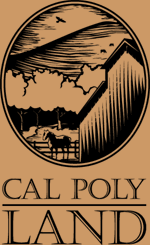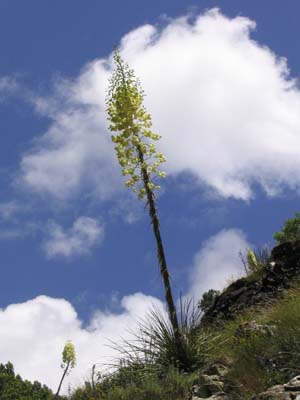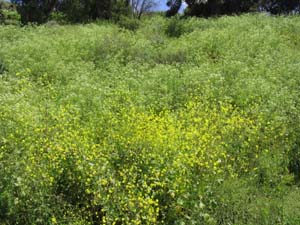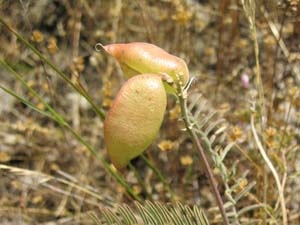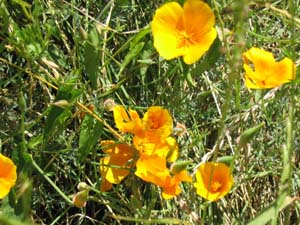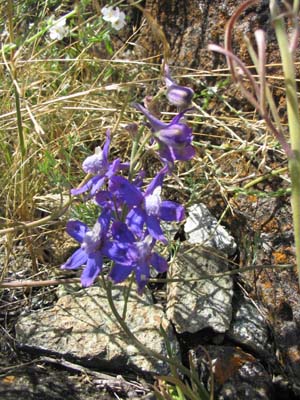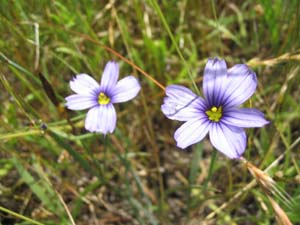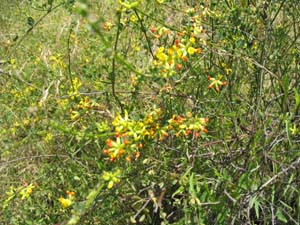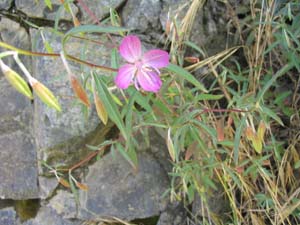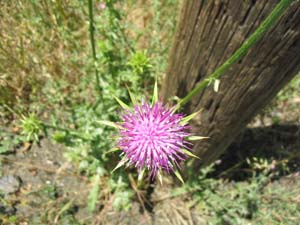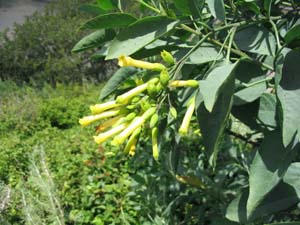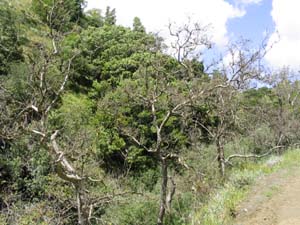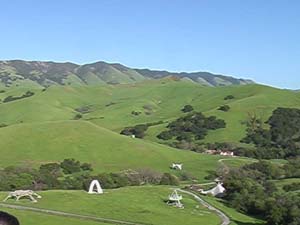Wildflowers
Seasons Change |
|
|
"Many eyes go through the meadow, but few see the flowers in it." -Ralph Waldo Emerson The wildflowers of Poly Canyon are in full bloom during the spring season. Below are pictures taken of this spring occurrence, while on a casual stroll through Poly Canyon.
Our Lord's Candle [Yucca whipplei] This majestic wildflower blooms between April and May and can only be seen on the coast of Southern California or Nothern Baja California. The yucca maintains a symbiotic relationship with a species of moth that allows both to survive and proliferate. The cream colored flowers can be seen blooming up in the hills surrounding Cal Poly, but for a closer look just make it about half way down the Poly Canyon trail and look to the right.
Charlock [Brassica kaber] This plant is part of the mustard family and is probably familiar to most people walking through Poly Canyon. It can be found along the length of the trail and on either side. It blooms from January to June, but has dominated the landscape during the spring months due to all of the rain the land received in the beginning of the year.
Locoweed [Astragalus curtipes] Locoweed is a native plant that is found in the grassland. This picture was taken near the design village on a hill covered with grasses and little other plant life. If you shake the pod-like structure, you can hear something moving inside. The locoweed blooms from January to June.
California Poppy [Eschscholzia californica] Poppies are located all along the trail through Poly Canyon. They often "pop" out of rocky crevices where other plants could not survive. This state flower of California is a native species and blooms from February to September, but really comes on strong during the spring months.
Lupine [Lupinus polyphyllus] The brilliant purple color of the lupine can be seen covering the hills near the 'P' or in the design village where this was found. This plnat actually finishes blooming in the spring. It thrives in open fields and blooms from January to May.
Blue-eyed grass [Sisyrinchium bellum] This gorgeous purple flower is a perennial that only blooms from March to June. It likes to grow in open spaces in moist areas. Get out to see this flower before the spring ends and you have to wait another year!
Charlock [Brassica kaber] This plant is part of the mustard family and is probobly familiar to most people walking through Poly Canyon. It can be found along the length of the trail and on either side. It blooms from January to June, but has dominated the landscape during the spring months due to all of the rain the land received in the beginning of the year.
Farewell-to-Spring [Clarkia amoena] The delicate Farewell-to-Spring was discovered in a shady area across from the creek along the Poly Canyon trail. They are an annual wildflower that is tolerant to a variety of climates, but prefers the scrub community.
Winged Thistle [Carduus tenuiflorus] Also known as the Winged Plumeless Thistle and the Itallian Thistle, this plant invades disturbed areas. This is why it can be found near the trail - an unnatural part of the canyon. It was identified as a serious invader of the United States in 1956 and is native to Europe. The winged thistle can grow up to 6 feet tall and watch out for their prickles!
Tree Tobacco [Nicotiana glauca] This yellow, funnel shaped flower grows on a tree or bush. This picture was taken at the first bend in the trail; looking past this tree we could see the cows shading themselves in the valley. These flowers begin blooming in May and last through November. This plant is poisonous to several insects.
Poison Oak [Toxicodendron diversilobum] Poison oak is not a wildflower, but it too goes through a seasonal change. In the winter, poison oak can loose all of its leaves so that only the woody portion of the plant remains. Even though the leaves are not present, the plant can still transmit irritating oils. In the spring, the leaves return and can be distinguished from other plants by their reddish tone. "Leaves of three, let them be."
California Sycamore [Platanus racemosa] Again, this is not a wildflower, but the Sycamore does undergo a seasonal change. As the spring begins, the Sycamore tree looses all of its leaves due to the presence of the fungus Apiognomonia veneta, but as the temperature increases the tree is able to regrow its foliage. If you like Cal Poly's plants as much as we do, try visiting the Cal Poly Plant Conservatory website! |
|
|
Links:
|
